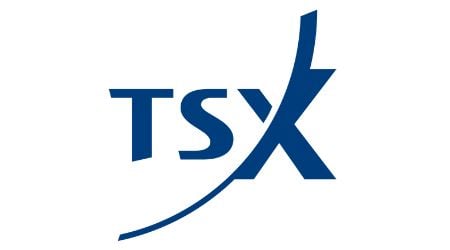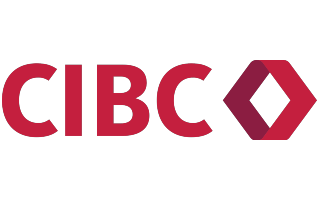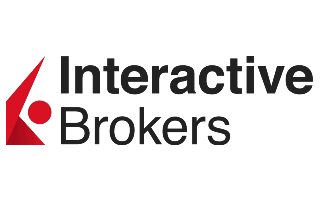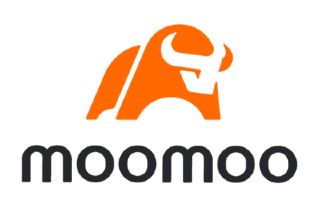Key takeaways
- Most investment platforms in Canada provide access to major US exchanges like the NYSE and Nasdaq, where you can buy stocks in companies like Meta (Facebook), Netflix and Tesla.
- Fees typically range from $0 to $10 per trade, not counting any applicable foreign exchange fees.
- If you’re wondering how to buy US stocks in Canada, first carefully compare brokers, then open a trading account, add funds and choose which stocks to buy.
Buying US stocks in Canada in 4 steps
- Compare brokers with access to US stocks
- Open your account by providing your personal information
- Fund your account by transferring money from your bank account
- Search and select the stocks you want to invest in and start trading
Top online trading platforms to buy US stocks in Canada
Step 1: Compare Canadian brokers that let you trade US stocks
Before signing up to a new account or a broker, it’s important to check which countries and exchanges are accessible and what the associated fees are. By using a platform that offers access to US exchanges, you can deposit funds into your account and buy US stocks in Canada.
When finding the best platform to buy US stocks in Canada, consider the following factors.
Fees
You may be charged a trading commission plus a foreign exchange (FX) fee when trading US stocks. Some platforms may require you to pay a monthly fee in order to keep your account running or to access certain features.
Commissions might be higher for trading foreign stocks and may be charged as a percentage or fixed amount. You may want to look for brokers that offer USD accounts, so you don’t pay a conversion fee every time you trade.
International market access
A few Canadian platforms like Interactive Brokers make it easy to trade stocks on markets outside the US and Canada. If you want to trade on more than just US and Canadian exchanges, check the fine print to find out which exchanges you can access worldwide. Learn more about buying international stocks.
Account & order types
Can you open registered, non-registered, cash and/or margin accounts? What types of securities can you access (stocks, ETFs, mutual funds etc.)? Do you always intend to place market orders, which let you buy at the current market price, or do you want the flexibility of placing limit orders, which let you automatically buy when the price reaches a predetermined threshold?
Ease of use
Check customer reviews and promotional videos to get a feel for how easy a platform will be to use. Is it fast, simple and convenient to execute a trade and monitor market performance?
Market research and advice
Find out whether the broker offers stock research and market analysis to help inform your trading decisions. Does it make it easy to keep up to date with the latest market news? Are there stock recommendations provided?
Market data
Check how up-to-date each platform’s market data is. Accessing the most current information can be critical when making investment decisions.
Trading tools
Is the platform just online or can you also place trades over the phone? Are flexible options like limit orders available to let you take advantage of market fluctuations?
Educational resources
Look for online educational resources that will teach you how to use the platform, how the stock market works, and how to invest in international stocks. These include webinars, video tutorials and how-to guides.
Mobile app
If you want to be able to trade on the go, look for a stock trading platform with a user-friendly mobile app. Read customer reviews to gauge its ease of use, security and trading functionality.
Customer support
Don’t forget to find out how you can access customer support if you have a problem, such as phone, live chat and email. Will support be available during US market hours?
Compare online platforms for investing in US stocks from Canada
Not all brokers or trading platforms provide access to global stock exchanges, so if you want to buy and sell US shares, you’ll need to find one that offers the service.
Finder Score for stock trading platforms
To make comparing even easier we came up with the Finder Score. Trading costs, account fees and features across 10+ stock trading platforms and apps are all weighted and scaled to produce a score out of 10. The higher the score the better the platform - simple.
Step 2: Open a trading account
Once you’ve chosen a stock trading platform, it’s time to sign up for an account. You’ll need to be at least the age of majority in your province or territory (18 or 19 years old) and have a Canadian residential address.
You can apply online by providing:
- Your name and date of birth
- Your address and contact details
- Your Social Insurance Number (SIN)
- Proof of ID
Fill out a W-8BEN form to confirm you’re not a US tax resident and avoid being double taxed in Canada and the US. Most platforms and apps let you fill out a W-8BEN form online. You’ll also need to link your bank account to your stock trading account.
Step 3: Fund your account
Once your account is open, you can deposit money into it. Available transfer methods may include debit, bank transfer, wire transfer, or bill payment. Funds may arrive within a few days, depending on the payment method you choose.
Don’t forget to factor in currency conversion costs when depositing Canadian dollars, which will need to be converted to USD before you can trade. Be aware of the exchange rate and any conversion fees that apply.
Step 4: Buy US stocks
When you’re ready to buy US stocks, log in to your online account and search for the US stock or ETF you want to invest in. Select the number of shares you want to purchase, and place a buy order.
Use your platform’s education resources to learn how to trade and hone in on smart investments.
Is it better to buy Canadian or American stocks?
One of the biggest advantages of investing in American stocks over Canadian stocks is that you can access a much larger market with more investment choices. This is great for diversifying your portfolio and increasing the liquidity of your investments—with more investors and publicly traded companies across a wide variety of sectors and industries, it’s not difficult to buy and sell assets.
That being said, you don’t have to choose between Canadian and US stocks. Consider investing in both. Holding assets in different markets lets you take advantage of economic spikes in multiple regions and minimize losses if one market periodically outperforms the other.
How much does it cost to invest in US stocks?
There are two key fees you need to consider when investing in US stocks from Canada:
- Trade commissions. This is a fee charged every time you place a buy or sell order. Some platforms like Wealthsimple have no commissions.
- Foreign exchange (FX) fees. The FX fee is the cost the provider charges you to change CAD into USD. This often runs from less than 1% up to 2.5% of the amount converted.
Why invest in US stocks from Canada?
Now that you know how to buy US stocks in Canada, you’re probably wondering why it’s worth investing in the US market. Here are some of the reasons.
 Historically greater returns from buying US stocks
Historically greater returns from buying US stocks
The US economy is one of the most powerful in the world. In the last decade, Wall Street’s S&P 500 index has delivered an average return of 10.63%. Over the same time period, Canada’s similar index, the S&P/TSX Composite, has returned 5.23%.
 Access to US market
Access to US market
Many more companies trade on US exchanges than Canadian exchanges. The NYSE and Nasdaq are the two largest stock exchanges in the world in terms of market capitalization, offering a number of lucrative investment opportunities.
Many of the world’s biggest global growth companies, such as Facebook (Meta), Amazon, Apple, Netflix and Google (collectively known as the FAANG stocks) are listed in the US.
 Diversify your portfolio by buying US stocks in Canada
Diversify your portfolio by buying US stocks in Canada
Aside from opportunities to profit, it’s important to have a diversified portfolio of stocks. This means investing in companies from a range of sectors as well as countries. If Canada’s economy slows down, stocks listed in another country can act as a buffer.
What are the risks of buying US stocks in Canada?
Investing in an area, industry or country which you know little about is always risky. When buying American stocks in Canada, you may not have the same knowledge and expertise. So, it pays to make sure you know what you’re getting into.
 Exchange rates
Exchange rates
Unlike trading Canadian stocks, you’ll be on the hook for exchange fees for buying stocks in US dollars. When converting Canadian dollars into US dollars, the investment platform will likely add a small fee onto the exchange rate. This usually amounts to a small percentage of the exchanged amount.
 Currency conversion fees
Currency conversion fees
Many brokerages charge a currency conversion fee on top of the exchange rate markup. The CAD-USD rate fluctuates frequently, which might negatively impact your investment. Make sure to factor these costs into your investment when buying US stocks from Canada.
 Taxation
Taxation
Do you have to pay tax on US stocks? If you hold US assets and live in Canada, you’re responsible for paying a 15% withholding tax to the IRS. However, this generally doesn’t apply if you hold US stocks or ETFs in a Registered Retirement Saving Plan (RRSP) or Registered Retirement Income Fund (RRIF).
However, the CRA lets you claim a foreign tax credit for the withholding tax you paid, so you’re taxed twice. If you earn capital gains from selling a US stock or ETF, you’ll pay tax to the CRA, not the IRS. Find out how stock investments are taxed in Canada to avoid finding yourself on the wrong side of the CRA.
What is the best way to buy US stocks in Canada?
The best way to buy US stocks from Canada depends on your investment knowledge and goals.
For example, if you’re a first-time investor looking to steadily grow your wealth, you may want to invest in exchange-traded funds (ETFs). ETFs offer a relatively safe, easy and cost-effective way to buy into a variety of US stocks.
Did you know you don’t need to trade on US markets to invest in US stocks? There are hundreds of ETFs listed on the Toronto Stock Exchange that track US stocks. One example is the BMO S&P 500 Index ETF, which aims to replicate the performance of the S&P 500 index.
But if you prefer to personally curate and manage your own investment portfolio, you can buy stocks in individual companies.
Canadian depositary receipts: An alternative way to invest in US stocks
Canadian Depositary Receipts (CDRs) represent shares in companies from around the world and are traded in Canadian dollars on the NEO Exchange. Buying CDRs allows you to bypass the risk of exchange rate fluctuations while owning fractional shares in international companies.
There are CDRs for major US companies like Amazon, Apple, Netflix, and more. CDRs are offered by CIBC and can be traded just like stocks through online brokers. There are no ongoing management fees, and each CDR costs just $20.
If the companies you invest in pay dividends, you’ll receive payouts, but these won’t qualify for the dividend tax credit.
Which platforms let you invest in US stocks from Canada?
There are a growing number of Canadian online share trading platforms that offer access to international stock exchanges. Here are some of the platforms that support US stocks in Canada:
US stock market hours: When can I trade?
Regular trading hours for major US stock exchanges like the New York Stock Exchange (NYSE) and Nasdaq are Monday to Friday from 9:30am to 4pm (Eastern time).
If you aren’t available to trade during these times, you have two options. Some brokers let you place limit orders on US stocks, which means your trades will be automatically executed when specific stocks hit the purchase price you specify.
Some brokers also support after-hours trading, so you can place trades before and after US stock markets hours. When the market opens, your orders are executed.
How to hold US stocks in TFSA
Can you buy US stocks in a TFSA? Yes.
A tax-free savings account allows you to invest up to $7,000 per year and not pay tax on your capital gains or dividends. Permitted TFSA investments not only include cash, bonds, mutual funds, and stocks and ETFs that are listed on a designated stock exchange.
This means you can use your TFSA to invest in US stocks and ETFs listed on exchanges like the New York Stock Exchange and the Nasdaq. This makes a TFSA well worth considering when deciding how to buy US stocks in Canada.
Depending on your TFSA provider, you may be able to hold US-dollar and Canadian dollar investments in the one account, or you may need a separate TFSA for USD investments.
However, take note that buying US stocks in a TFSA won’t mean that your investment income is completely tax-free. Any dividends earned on US stocks held in a TFSA are subject to a 15% withholding tax.
How do US stocks perform?
The best way to understand past performance of US stocks is to take a look at the two major US stock exchanges: the Nasdaq and the NYSE.
Bottom line
Investing in US stocks from Canada is a solid way to diversify your portfolio and gain exposure to US markets. Most Canadian platforms let you invest in US stocks, but foreign exchange fees may apply. As with any investment, you could gain or lose money, so do your research before buying in.
FAQs: How to buy US stocks in Canada
More on investing

Best stocks to buy right now in Canada
Finder’s unique algorithm found the 20 best TSX stocks to buy right now.
Read more…
Best stocks to buy now: Top US stock picks
These are the 20 best US stocks to buy right now, trading on the Nasdaq and NYSE.
Read more…
How to buy TSX stocks
Get familiar with Canada’s largest stock exchange and find out how to buy TSX stocks quickly online.
Read more…More guides on Finder
-
How to buy Newsmax (NMAX.US) stock in Canada
Everything we know about the Newsmax IPO plus information on how to buy in.
-
Low-cost and commission-free stock trading in Canada
Learn how to choose a free trading platform in Canada to buy and sell stocks.
-
How technical analysis works
Here’s what you need to know about technical analysis to become a better trader.
-
How will tariffs affect the stock market?
Find out how the Trump tariffs will impact the stock market and explore Canadian stocks that may be resilient amidst tariffs.
-
Best renewable energy stocks
These are the best renewable energy stocks to buy now in Canada.
-
Best stocks to buy right now in Canada
Finder’s unique algorithm found the 20 best TSX stocks to buy right now.
-
10 best trading platforms and apps in Canada for 2025
Whether you’re a new or experienced investor, these are the best stock trading platforms and apps in Canada.
-
How to invest in the S&P 500 in Canada
Find out how to invest in the S&P 500 in Canada—one of the world’s most popular stock indices—to diversify your portfolio.
-
RBC Direct Investing review
Here’s what you need to know about the benefits and shortcomings of this Big Bank investment platform.
-
Questrade review
Questrade is a leader among Canadian discount brokerages, but is it right for you? Compare fees, features and alternatives here.




